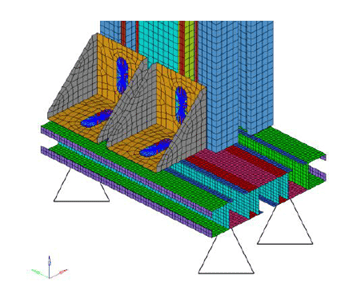This case study describes the systematic lightweight design optimization of typical armoured transporters. Based on a completed engineering project, it was investigated how significant weight savings can be achieved through wall thickness reduction, material substitution, structural and system lightweight construction. The aim is to comply with the permissible total mass of 3.5 t for civilian-approved vehicles while maintaining ballistic protection and functional requirements.

The initial situation
A medium-sized company produces customized armoured vehicles for civilian and commercial applications. Due to conventional construction methods and massive protective structures, the existing vehicle concepts regularly exceed the driving license limit of 3.5 tons. The aim of the project was a technically sound evaluation and optimization of these structures in the direction of lightweight construction - while fully retaining the protection class (e.g. VPAM BRV 2009 VR7).
The challenge
In addition to ensuring the protective function against ballistic fire and
The following challenges must be overcome in the event of splintering effects:
- Weight restriction <3.5 t for civil driving license category
- Integration of comfort, communication and air conditioning systems
- Ensuring structural integrity in crash, vibration and continuous load scenarios
- Production restrictions, material availability and convertibility
The lightweight construction strategy followed a multi-stage approach:
- Inventory analysis: Survey of actual weights, wall thicknesses, materials and load paths
- Target concept: Derivation of reference values per functional group, definition of technical targets
- FE modeling: Nonlinear structural and impact simulations under STANAG/VPAM load cases
- Optimization: Wall thickness reduction, substitution with aluminium sandwich and fiber composite, topology and shape optimization
- Mass management: Integration of all individual measures into a consistent mass book with target/actual comparison

The following results were achieved through the consistent application of the measures:
Identification of potential weight savings to reduce the total mass by 430 kg (-12.8 %)
- Weight saving potential - lightweight structure: 180 kg
- Weight saving potential - material substitution: 130 kg
- Weight saving potential - functional integration/system lightweight construction: 120 kg
Realized in the Interior area a cost-neutral mass reduction of approx. 30 kg. The final optimized concepts continued to meet the ballistic requirements and allowed the Vehicle registration with 3.48 t total mass.